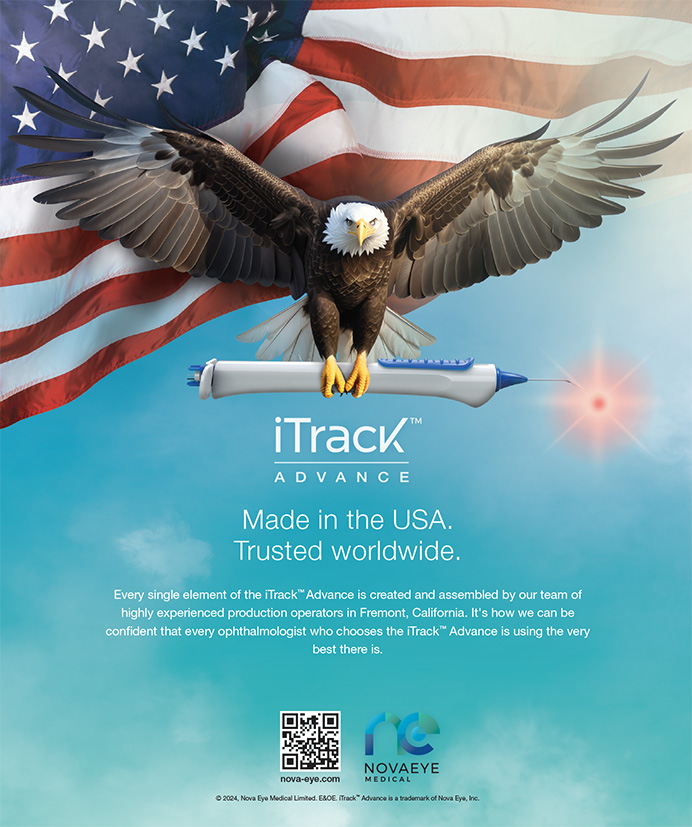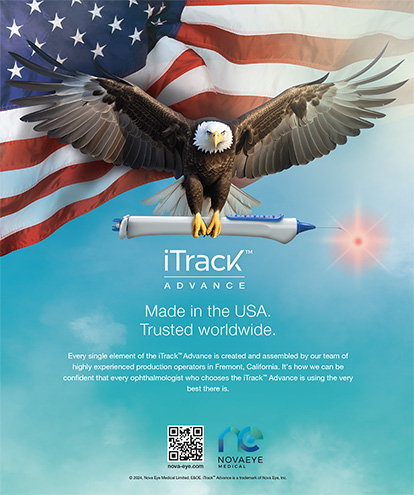To view the figures related to this article, please refer to the print version of our November/December issue, page 69.
Ectasia after LASIK is one of the complications refractive surgeons fear most. Whereas the majority of patients are appropriately aware of more common problems such as glare and halos, they may be unfamiliar with the potential for visual loss due to postoperative ectasia. Sadly, avoiding ectasia is currently as much an art as it is a science for refractive surgeons; there is no standard protocol for them to follow. Fortunately, the individual risk for developing ectasia is extremely low, and most properly educated patients considering LASIK surgery are not deterred by this potential complication. This article attempts to identify multiple risk factors for postoperative ectasia and describes my personal algorithm for screening patients.
BACKGROUND
Whereas the novice refractive surgeon can easily identify true keratoconus, even the most experienced ophthalmologist is challenged to identify corneas that are not truly keratoconic but may become ectatic after LASIK. When striving to better identify and avoid patients at risk for postoperative ectasia, refractive surgeons must watch closely during preoperative testing for any sign of intrinsic corneal weakness. Because the exact etiology of this weakness is unknown (perhaps it is due to a collagen cross-linking defect), there can be no way to test for it directly.
I learned several important lessons while serving as a consultant on six cases of postoperative LASIK ectasia. First, inferior corneal steepening was present in most, but not all, cases. Second, the degree of inferior steepening varied greatly among the eyes. Third, the traditional keratometric power map generally showed inferior steepening located below (outside) the central 3 mm of the cornea. Fourth, two eyes also exhibited inferotemporal corneal steepening. Finally, ectasia occurred in low-to-moderate myopes, not only in high myopes. Unfortunately, none of the eyes I examined had undergone a preoperative evaluation with the Orbscan topographer (Bausch & Lomb, Rochester, NY), so I was unable to analyze the posterior elevation or the displacement of either the posterior float or corneal thinning.
Based on these findings and my overall experience, the ectasia risk factors of primary concern to me are (1) inferior corneal steepening on the keratometric power map within the central 5 mm, (2) elevation and/or inferior displacement of the posterior float, (3) steep preoperative keratometry, (4) the amount of corneal tissue removed, (5) the amount of residual tissue in the corneal bed, and (6) inferiorly displaced corneal thinning.
THE ALGORITHM
My algorithm relies on a “three strikes” system. I will perform LASIK on patients whom I determine to have up to one and one-half strikes, perform PRK for patients with up to two and one-half strikes, and discourage surgery involving the removal of corneal tissue in patients with three strikes or more (Figures 1 through 3). My algorithm attempts to identify and rank risk factors for postoperative ectasia as evident on Orbscan topographies, and it assumes a cumulative relationship among these factors. I am sure that some of my colleagues will disagree with some of my reasoning, and I value any input. This algorithm should not override the experienced surgeon's instincts or overall feelings of gestalt when evaluating the candidacy of potential patients.
Each of the following represents three strikes:
1. The traditional keratometric power map reveals inferior steepening greater than 2.50 D in the central 5 mm of the cornea.
2. The posterior float is greater than 65 µm (even if well centered).
3. The posterior float is greater than 40 µm and displaced inferiorly by more than 2.5 mm from the anatomic corneal center.
4. The residual stromal bed would be less than 250 µm after primary LASIK.
5. The residual total corneal thickness would be less than 350 µm after primary PRK.
6. The thinnest area of the cornea measures at least 25 µm thinner than the anatomic corneal center, and it is displaced inferiorly by more than 2.5 mm from the anatomic corneal center.
7. The patient's fellow eye is keratoconic.
8. The average preoperative keratometry reading is greater than 50.00 D.
Two Strikes
Each of the following represents two strikes:
1. The traditional keratometric power map shows an inferior steepening of greater than 1.50 D but less than 2.50 D in the central 5 mm of the cornea.
2. The posterior float is greater than 55 µm.
3. The posterior float is greater than 40 µm and displaced inferiorly by more than 1.5 mm but less than 2.5 mm from the anatomic corneal center.
4. The total depth of the laser ablation would exceed 160 µm of corneal tissue.
5. The patient's average preoperative keratometry reading is greater than 49.00 D but less than 50.00 D.
6. The thinnest area of the cornea measures at least 25 µm thinner than the anatomic corneal center, and it is displaced inferiorly between 1.5 and 2.5 mm from the anatomic corneal center.
One Strike
Each of the following represents one strike:
1. The posterior float is greater than 30 µm but less than 40 µm, and it is displaced inferiorly by more than 1.5 mm from the anatomic corneal center.
2. The thinnest part of the cornea (regardless of how much thinner) is more than 2 mm inferior to the anatomic corneal center.
3. The anatomic corneal center is less than 20 µm thinner than the inferior cornea (at 3 mm inferior to the anatomic corneal center).
4. The thinnest area of the cornea (regardless of location) is more than 25 µm thinner than the anatomic corneal center.
5. The patient has a preoperative total corneal thickness of less than 470 µm.
6. The total depth of the laser ablation would exceed 140 µm of corneal tissue.
7. The patient's degree of preoperative astigmatism is higher than 4.50 D.
8. The patient's preoperative average keratometry measurement is greater than 48.00 D but less than 49.00 D.
Half a Strike
Each of the following represents one half of a strike:
1. The posterior float is greater than 40 µm (even if well centered).
2. The patient is younger than 23 years old.
3. The patient's residual corneal bed would measure between 250 and 270 µm thick after primary LASIK.
4. The total corneal thickness would measure between 350 and 370 µm after primary PRK.
5. Compared to the maximum posterior-float depression (also termed cold spot), the maximum posterior-float elevation is greater than 100 µm.
6. The patient's myopia exceeds -8.00 D.
7. The patient has a family history (direct relative) of keratoconus.
Risk Factors Not Included
Other possible risk factors evident on Orbscan topography but not included in my algorithm include the following relative contraindications to LASIK: (1) the “3.0-mm zone irreg:” is greater than 1.50 D; (2) the “5.0-mm zone irreg:” is greater than 2.00 D; and (3) the “Sim K's Astig:” is greater than 1.00 D between the two eyes of a patient. Although, anecdotally, these risk factors have been helpful to me, I have not found them to be adequately sensitive and specific for screening patients, particularly in cases with high, regular, bowtie-shaped astigmatism. As a result, I currently view them as warnings to review my own criteria more closely.
RESULTS
Using my algorithm, I have not had any cases of ectasia to date in more than 5,000 surgeries. My noncandidacy rate is approximately 11% of patients. Of those who are candidates for surgery, approximately 85% undergo LASIK, and approximately 15% receive PRK. My surgical pattern differs significantly from several years ago when I performed PRK on just 2% to 3% of patients.
Despite my good fortune in avoiding ectasia, I inform all patients that their risk for this complication cannot be eliminated entirely. I explain that they have an approximate 1 in 10,000 risk of developing ectasia, which will force them to wear RGP or softperm contact lenses to attain satisfactory vision. I further stipulate that they have approximately a 1 in 100,000 chance of needing corneal transplants for good functional vision after LASIK. Patients must accept these risks before I will perform their refractive surgery.
CONCLUSION
Ultimately, there is no standardized protocol for evaluating patients' risks for postoperative ectasia. I hope to see the day when post-LASIK ectasia is entirely eliminated by a more standardized and scientific preoperative screening process. At this time and for the foreseeable future, however, patient screening remains an art. Patients and refractive surgeons would be well served by a centralized databank of post-LASIK ectasia cases that could undergo review in a scientific manner. Such research would shed light on this important LASIK complication. n






